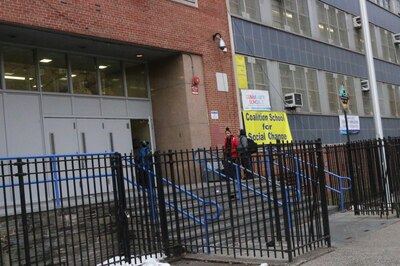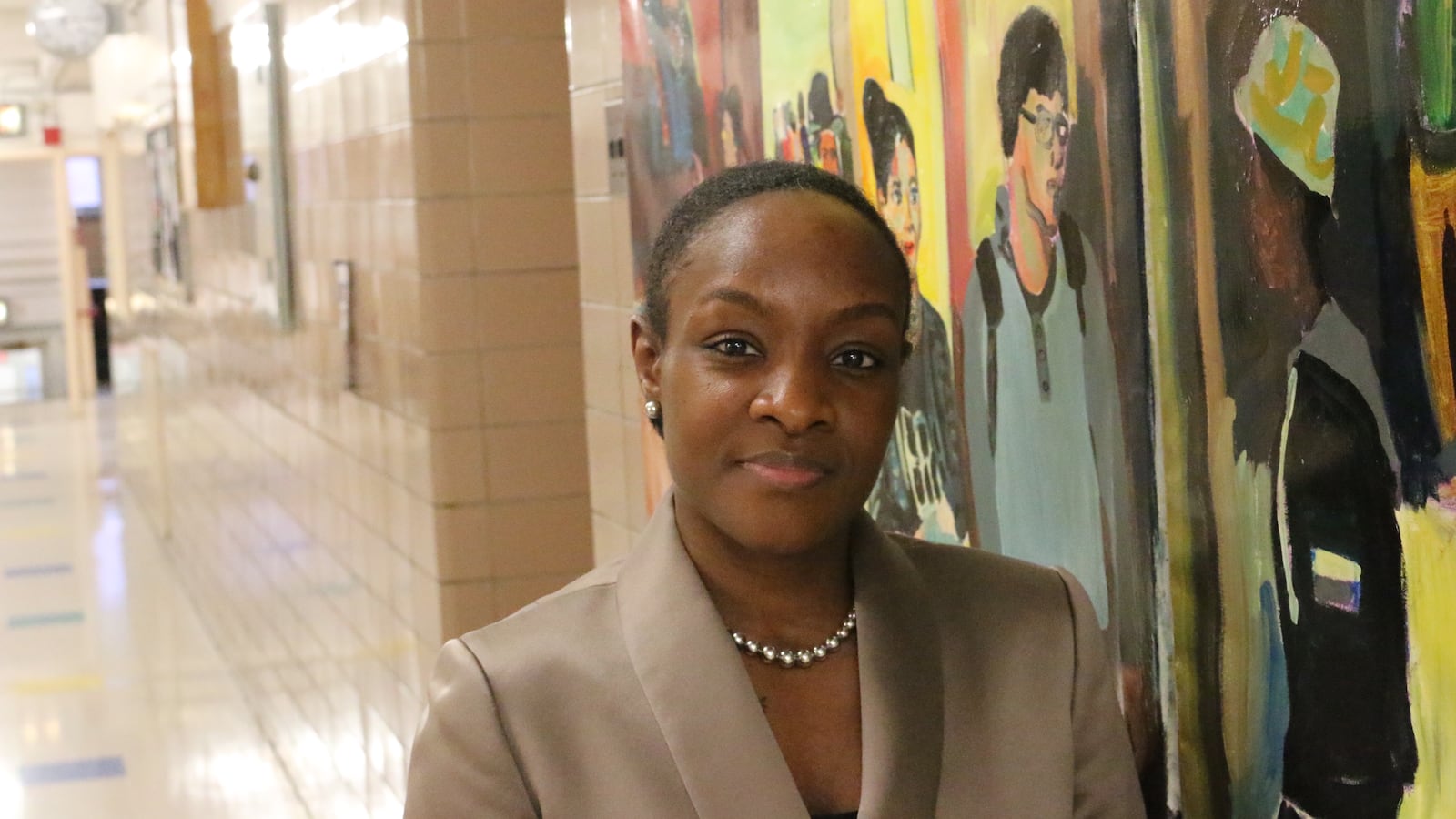Just two months after becoming principal, Geralda Valcin’s plan to reduce her school’s dropout rate landed her in a parking lot at Rikers Island.
One of her students at the Coalition School for Social Change had been incarcerated, so she made the trip — with a care package of clean t-shirts and socks in tow — to convince the jail’s staff to enroll him in a U.S. history class, one of the only courses he needed to earn a diploma.
“The principal at Rikers was like, ‘You really came up here to do this?’” Valcin recalls. “It fell on deaf ears.”
The jail wouldn’t let her visit the student or place him in the class Valcin requested, but that was only part of the reason for the trip. “He totally appreciated us for it,” she said. After his release about six months later, the senior returned to school and is on track to graduate this year.
Valcin chalks this up as a success story, but acknowledges she has many other students who need that type of support. At her Harlem school, more than a quarter of the ninth-graders who started in 2012 dropped out at some point during their high school careers, meaning they left without enrolling in another school. Only a handful of other traditional high schools in New York City had higher dropout rates, according to new statistics.
Valcin, who became principal last March after more than five years as assistant principal at Bronx High School for Law and Community Service, says she’s ready for the challenge.
She has spent much of the past year reinforcing systems to identify students early who are at risk of dropping out, and working with her school’s nonprofit partner to intervene. And the stakes are high: Coalition is one of 86 schools in the city’s “Renewal” program for low-performers, which offers schools extra social services and academic support, but which must show signs of progress in return.
Though her previous school wasn’t in the program, it also struggled with low graduation rates. It was “pretty much in the same predicament,” she said. That school boosted graduation rates by almost 20 points during her tenure, eventually besting the current citywide average of 72 percent.
Though graduation rates at her new school have started to climb, Valcin isn’t sanguine about the work ahead of her. For one thing, her students — roughly 92 percent of whom are black or Hispanic — often arrive far behind grade-level. Three-quarters come from poor families; 35 percent have disabilities.
Valcin isn’t willing to speculate about why Coalition’s dropout rate is higher than other schools with similarly high-need populations, and is careful not to assign blame. “The numbers spoke for themselves,” she said. “Coalition hasn’t graduated 50 percent of its students in six years or more. A lot of the work probably wasn’t happening.”
Soon after arriving, she launched a “Saturday academy” to help students stay on track and prepare for the state’s exit exams, and began carefully watching students who had attendance or disciplinary problems early on. “If that pattern begins, you’re almost doomed,” Valcin said.
That’s why, before students start classes in the fall, school staff review their middle school records and conduct home visits, so they can talk about previous problems before they crop up again.
“From the beginning of the year, we have highlighted a cohort of kids that without significant additional support wouldn’t cross the finish line,” said Derek Anello, a program director at Partnership with Children, the school’s nonprofit community partner. “We’re starting with ninth-graders before they’re even in the building.”

The school zooms in on students who don’t earn passing grades during the first few months of school, and offers extra academic help. (Valcin keeps a color-coded spreadsheet on her desk that tracks student progress toward graduation.)
If a student is showing up late — or not at all — they’ll likely get a knock on their door, sometimes from Valcin herself, or from a staff member at Partnership with Children. And if they’re routinely showing up late to class due to an extra-long commute, school officials might help the family find a school that’s closer to home.
City officials are expecting those efforts to produce significant results this year. Under the benchmarks assigned to the school through the Renewal program, its graduation rate should increase to 63 percent this school year, up from 46 percent. The education department considers graduation rates in decisions about whether to close or merge schools in the program.
Partnership with Children’s Anello is optimistic about meeting that goal partly because of Valcin’s embrace of his community organization. “Not every principal allows the [nonprofit partner] to be their right hand,” he added. “That’s not consistent across Renewal schools.”
But the school faces strong headwinds that make it hard to attract students who are more likely to graduate, including intense academic segregation. Among last year’s ninth-graders, for instance, fewer than five students had passed either their eighth-grade math or reading tests.
The school’s inclusion in the Renewal program, historically low graduation rate, and sagging enrollment have also signaled to prospective families that the school doesn’t have a strong track record.
In fact, Valcin has been reluctant to aggressively market the school. “I don’t want to go on the street and say, ‘Hey send your kids to this school’ given the condition we’re in currently.”
But she’s banking on this year’s graduation rate changing that calculation.
“The day after graduation, I’ll be on the corners passing out fliers,” she said.

